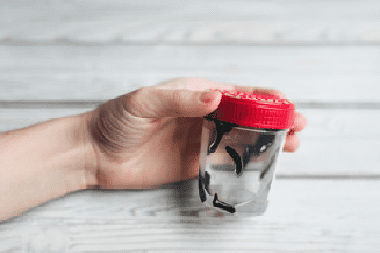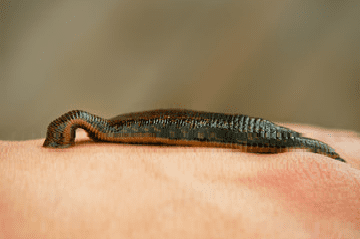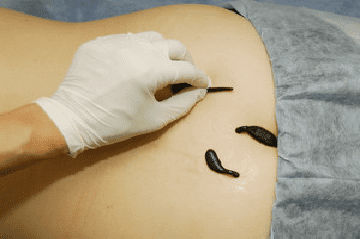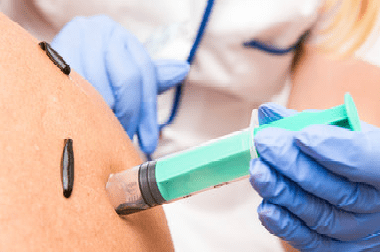Naturopathy >>>> Hirudotherapy - how to use it correctly
Hirudotherapy - how to use it correctly.

Hirudotherapy, or leech therapy, has always aroused genuine interest among curious people in connection with the issue of the effectiveness of this technique and its medical validity. It is not for nothing that hirudotherapy is classified as a method of naturopathy, since mysterious creatures - leeches - are neither medical nor pharmaceuticals, but have some peculiarities of vital activity, which brought leeches into the category of components of living nature, capable, with close interaction, to affect the health of other living organisms, and in particular - a person.
The whole question of the use of leeches in each case is reduced to the safety and correct use of hirudotherapy for the prevention or treatment of a certain kind of ailment. Such health disorders, in which leeches are used, include increased blood clotting. And this is rather the only justified possibility of using hirudotherapy as a method of treatment within the framework of diseases provoked by increased blood density (thrombosis) and for the prevention of thrombus tearing and blockage of blood vessels, including vital great vessels, for the treatment of hematomas, hemorrhoids.
There are also practices of using leeches for blood stimulation of tissues, to create a local immunostimulating effect due to the peculiarity of leeches, to cause local inflammation of tissues, bloodletting, if necessary, to reduce pressure in blood vessels according to indications and not without a doctor's recommendation, correlating the use of leeches with the state of health in general and with specific diseases that may have contraindications to blood thinning, which naturally makes the use of leeches (hirudotherapy) unacceptable and very dangerous.


Leeches are a natural alternative to anticoagulant drugs produced by the pharmaceutical industry that have a similar effect. Hirudin, an enzyme that is part of a substance secreted by leeches during blood feeding (many blood-sucking creatures have a similar enzyme in their saliva that prevents blood clotting and facilitates the nutrition of the latter), forms the basis of some synthetic anticoagulants.
Hirudin changes the rheological properties of blood in the direction of increasing its fluidity by inhibiting the process of fibrinolysis, as a result of which the protein fibrin, which forms the basis of the thrombus, is not formed. Hirudin also affects platelets, disrupting the conditions for their aggregation (clumping). Pharmaceutical Hirudin, as a synthetic substance, is injected into the body subcutaneously, intramuscularly, intravenously and parenterally. Depending on where the Hirudin falls, it has different time periods of action. The most effective is the intravenous and subcutaneous administration of Hirudin, which allows a faster and more effective effect on the properties of blood. It is the effect of long-term preservation of the properties of Hirudin, which gets subcutaneously (about 8 hours of slow resorption), that justifies the use of leeches as a source of anticoagulant.


But it is worth knowing that after leech bites, the bleeding does not stop without special medical manipulations, and significant traces remain that are difficult to heal in people with impaired tissue reparative properties (regeneration). In particular, with diabetes mellitus, bites may not heal at all (similar to non-healing wounds). For this reason, a history of diabetes mellitus is a contraindication to the use of leeches as an anticoagulant-producing agent.
People with problems with the formation of keloid tissue during the healing of superficial wounds should not be treated with leeches.
The choice of the place of attachment of leeches for the procedure is correlated with the purposes of their use. As a rule, leeches are placed locally in a limited number (no more than 30 pieces) in the areas of the skin for which hirudotherapy procedures are intended. It is possible to disconnect the leech until the moment when it is full and unhooking itself is possible only by treating the junction with alcohol-containing solutions, iodine, brilliant green solution, magenta, citric acid (concentrated lemon juice), or 9% vinegar solution. The leech can be forcibly disconnected mechanically by inserting a flat thin spatula, scalpel or other convenient medical instrument between the suction cup and the surface of the skin. It is impossible to disconnect the leech by other mechanical methods - the suction cup firmly adheres to the surface of the skin.
In nature, leeches can be carriers of bacterial and viral infections, since their way of feeding is associated with violations of the integrity of tissues (which creates an open gate for exogenous infection), and interaction with blood can cause the transfer of deadly viruses. For this reason, specially grown leeches (Hirudo medicinalis) are used in hirudotherapy, which are a means of individual use. For example, the patient keeps leeches purchased for several hirudotherapy procedures in a glass jar with clean (not chlorinated) water at room temperature until the next hirudotherapy session. Leeches have to get hungry so that they want to cling to the surface of the body. And the natural feeling of hunger in leeches appears only four months after feeding. After the end of the hirudotherapy session, the leeches are euthanized with chloramine in a special container and disposed of. The process of hirudotherapy itself is painless, since the leech's saliva contains a weak anesthetic.
There are much more contraindications to the use of leeches than there are indications for their use. It is strictly forbidden to use hirudotherapy in the following cases:
- the presence of acute and chronic infections in the body;
- weakened after diseases of the body;
- the presence of certain diseases (anemia, AIDS, chronic hepatitis, poor blood clotting, diabetes mellitus, systemic vasculitis , vascular angiopathy, arterial hypotension);
- the presence of tumors of a malignant or indeterminate nature;
- the presence of skin rashes in the area of application of leeches;
- the presence at the site of leech attachment of manifestations of skin diseases associated with violations of the integrity of the skin (eczema, psoriasis, systemic lupus erythematosus, neurodermatitis, atopic dermatitis and others);
- the presence of unspecified allergic reactions of a general and local nature;
- unstable psyche and the presence of mental disorders.
Treatment of wounds after using leeches also has its own characteristics. Bleeding of the wound after a bite can last up to a day (based on: 8-10 hours of slow resorption of Hirudin plus time to restore thrombus formation). For this reason, the wounds are sealed with special antiseptic adhesives - sealants, but they are not treated with alcohols, alcohol-containing compounds or iodine-containing compounds to prevent additional skin injury - burns.

Read

Read



























